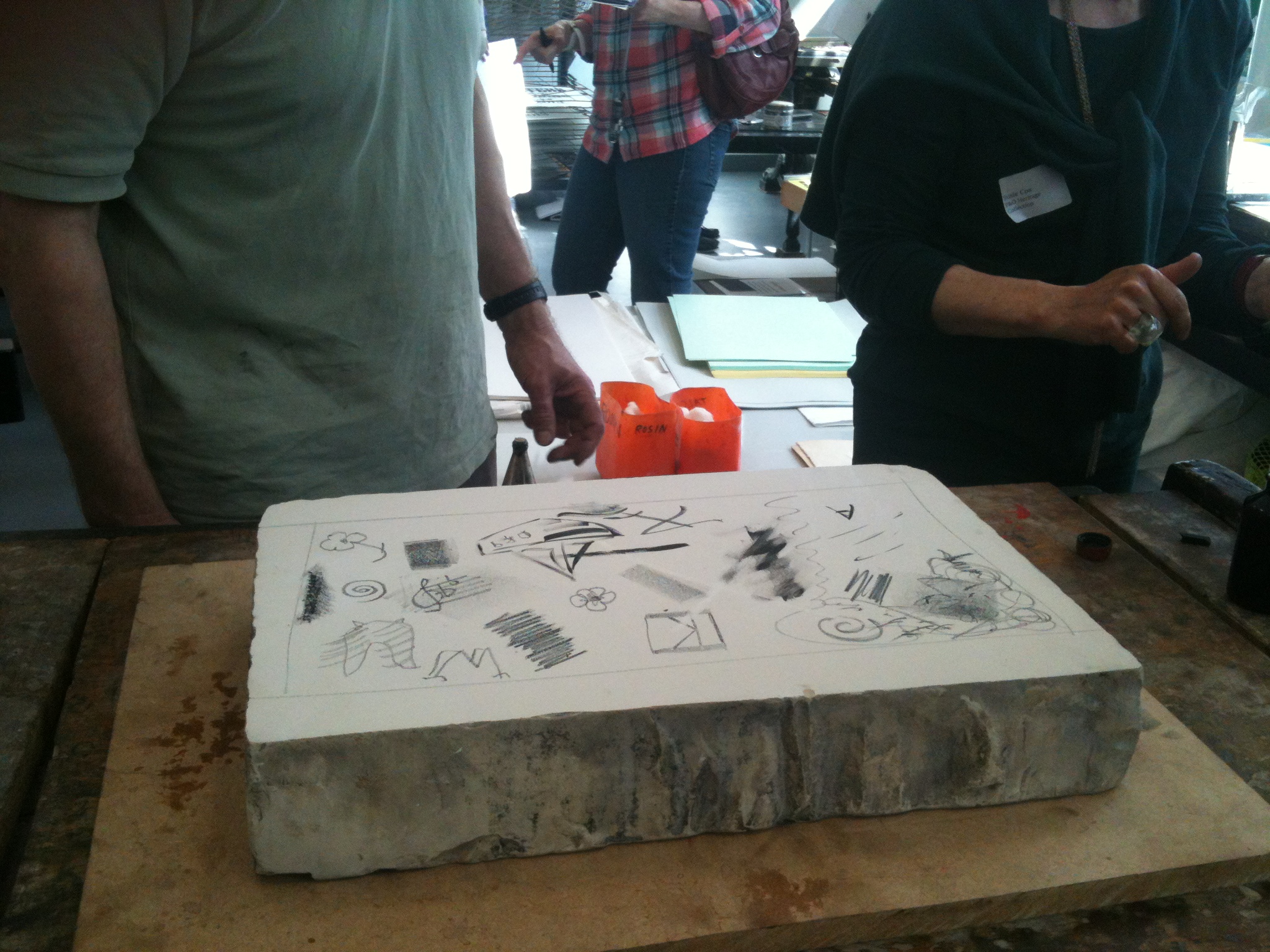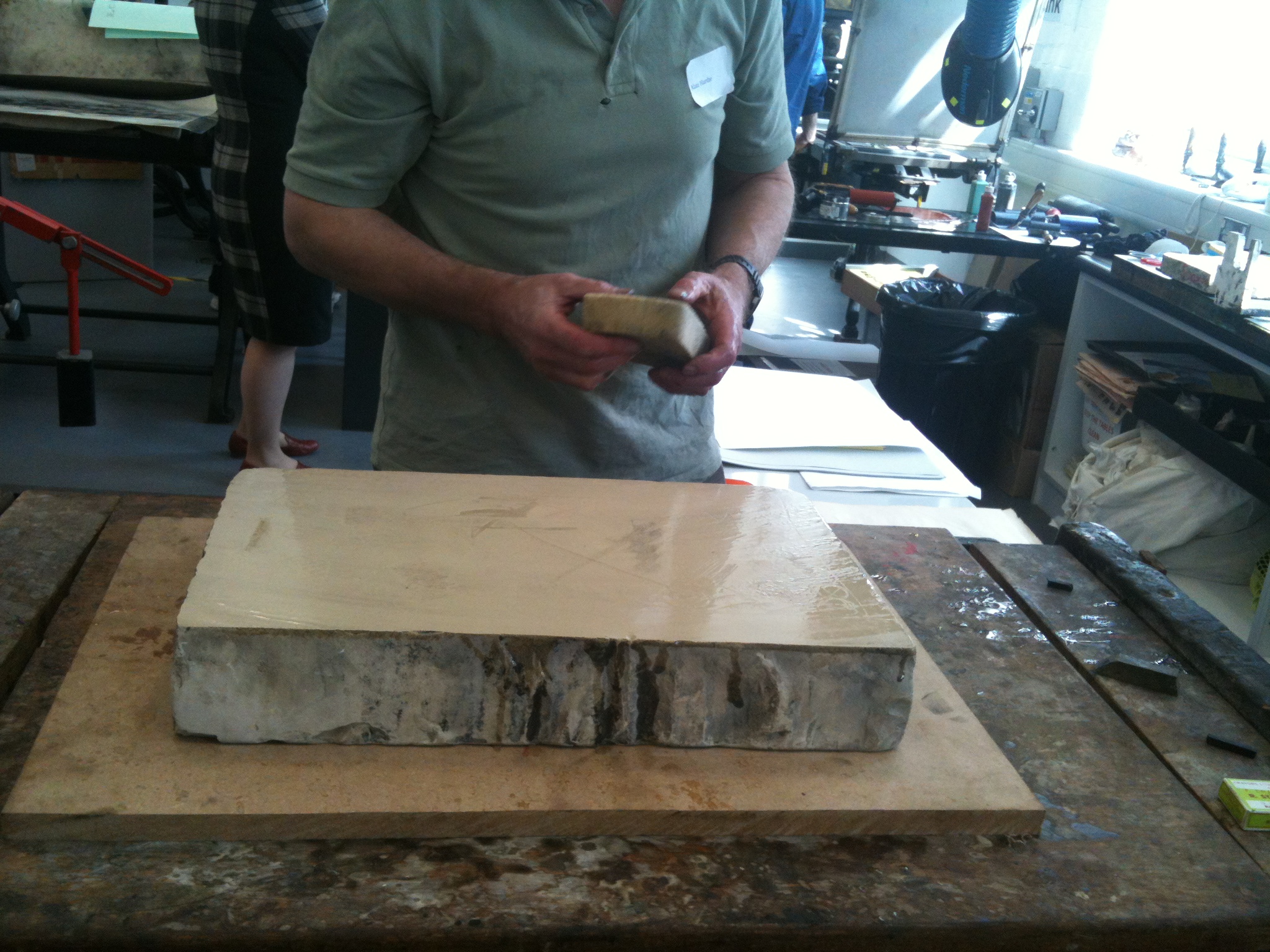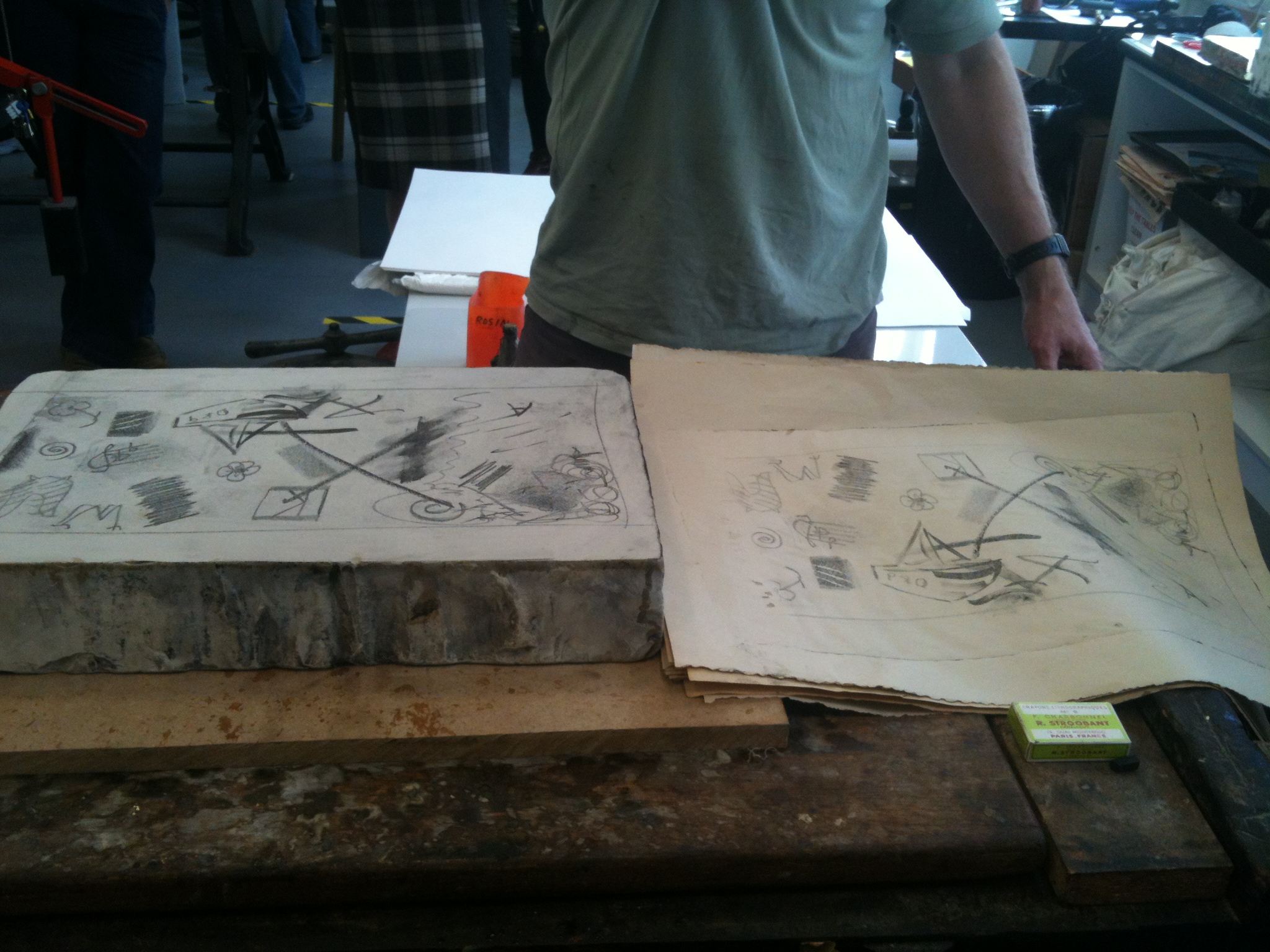Many of the posters in our collection were produced using lithography, a print technique dating back to the 1860s and used right up to the 1970s. I recently went to a training day at Reading University to learn how lithography works.
When a railway company needed a poster they would have commissioned an artist or studio to design it for them. The poster design was not then photographed and printed, but was given over to a highly trained lithographer (or team of lithographers) who would faithfully reproduce it for mass production.
The basic lithographic process involves making marks with a greasy crayon or ink on a piece of limestone that has been ground down and made smooth. The limestone is absorbent and absorbs the grease. The surface of the stone is then chemically treated to bind the grease to the stone, damped with water and finally inked using a greasy printing ink. The ink sticks to the greasy marks but is repelled by the water, allowing the design to be printed.

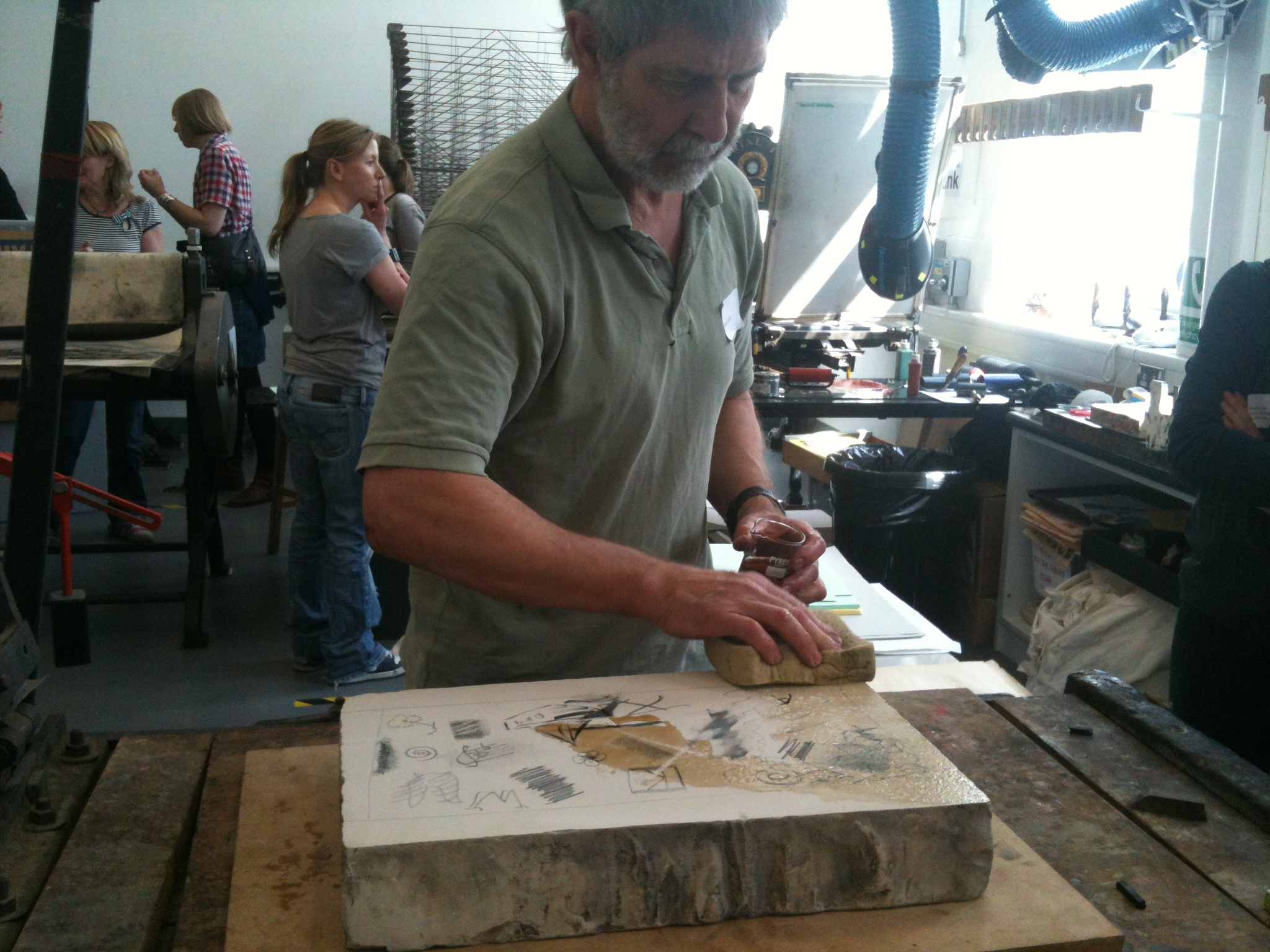
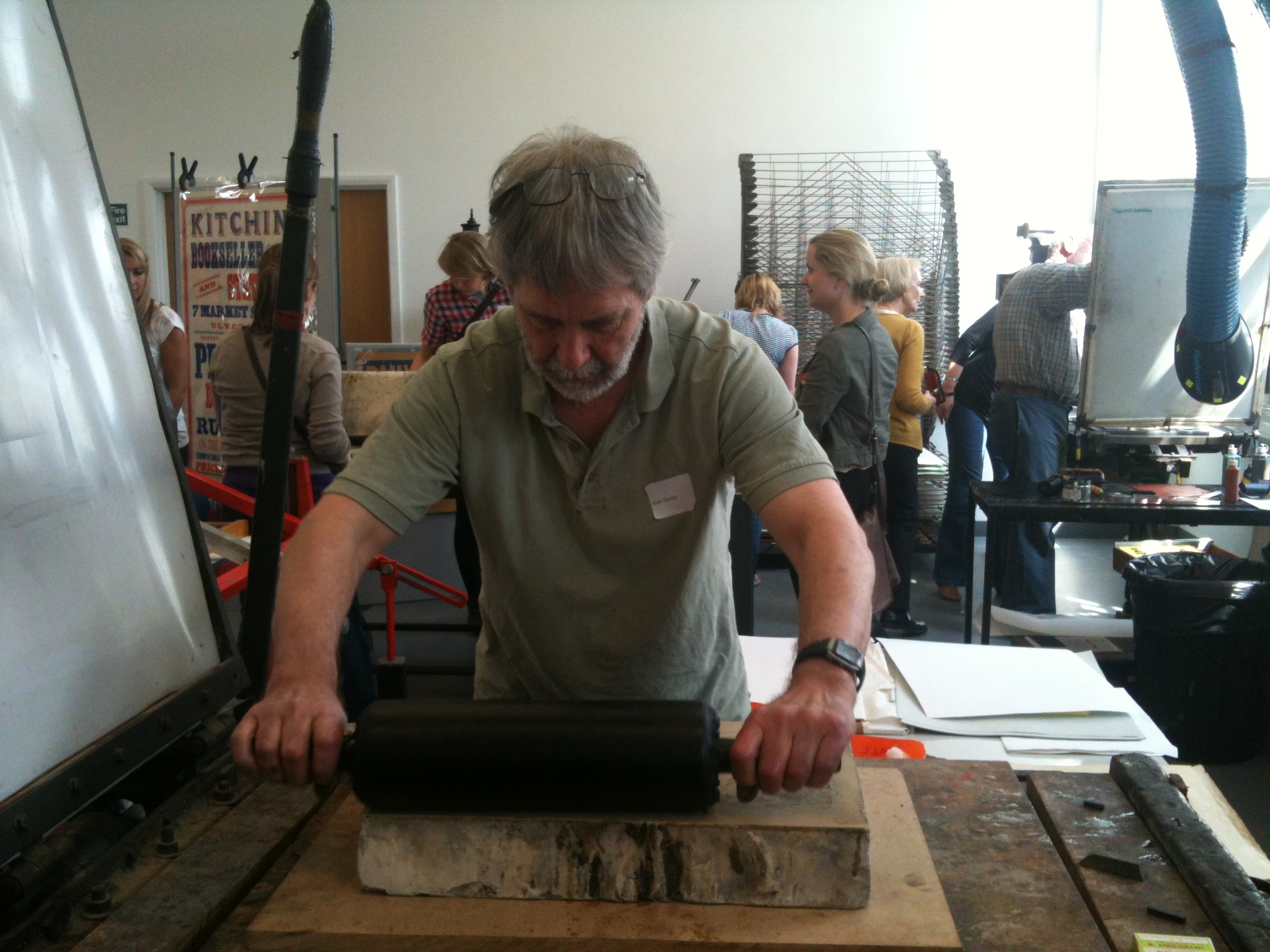
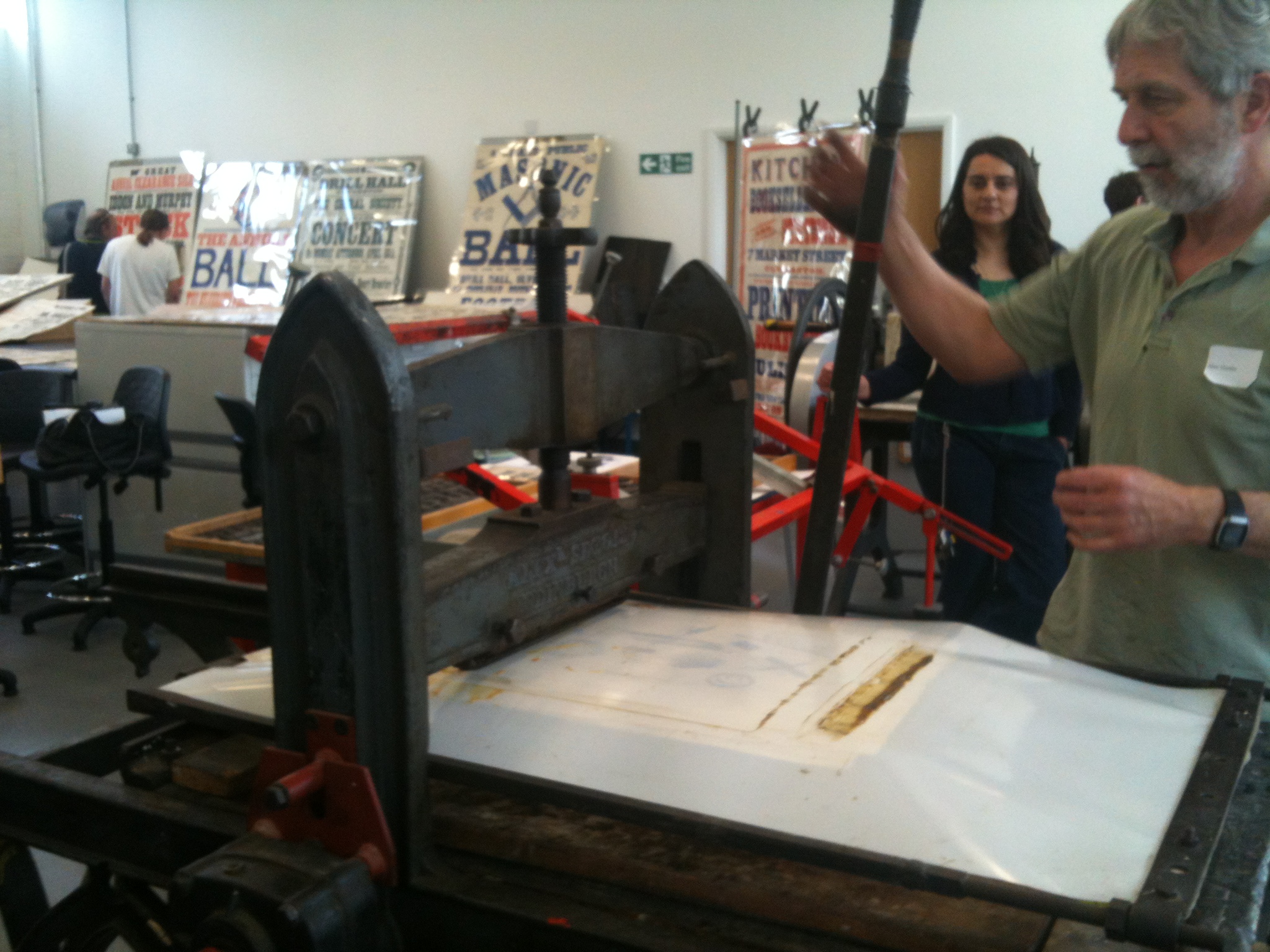
The process of colour lithography (chromolithography) required to reproduce posters was a complex one and indicates the necessity for the 7 year apprenticeship that lithographers went through. First of all a ‘key line drawing’ would be made defining every single change of hue, tone, line or edge (see this example on Flickr). This was an incredibly complex drawing from which the colour separations were then made.
A stone was prepared for each colour required based on the keyline drawing and they were over-printed to form the image. Colours could be overprinted to create different colours and tones to produce the final design.
These lithographers were incredibly skilled and talented individuals whose anonymous work allowed the designs of more well known poster artists to shine through.
